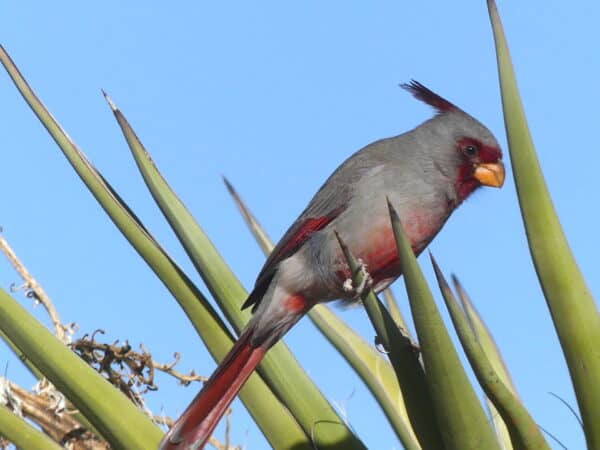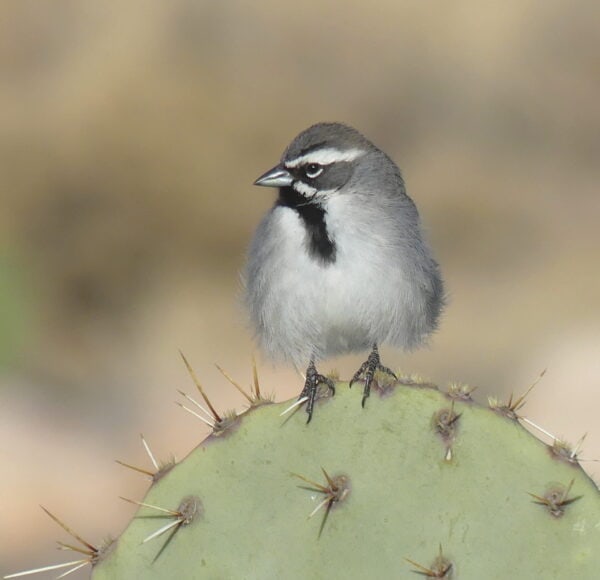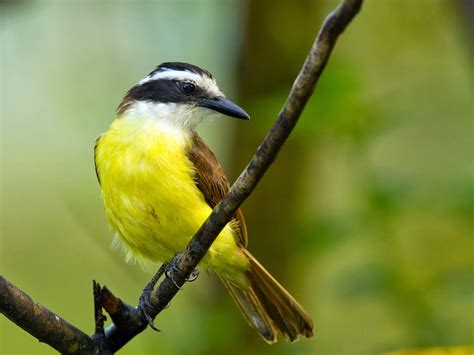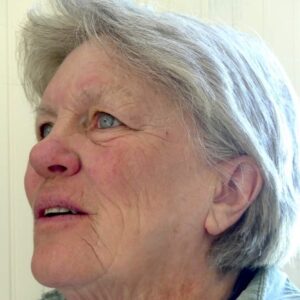I accepted her invitation to go birding with reservations—my experience with birds was limited to fast-food nuggets. I agreed to this jaunt simply because of her enthusiasm, but my budding interest turned to panic when she told me to meet her at 5 a.m. That’s morning, right? The only time I’d ever gotten up that early was when my alarm went off accidentally; however, I’d heard that birders lack an acute sense of humor, so I decided to nod knowingly and made a mental note to set all three of my alarms.
“We’ll try to get a few migrating warblers first and then if we’re lucky we might find the kiskadee,” she said. I nodded, even though I had no idea what a kiskadee is or whether I really wanted to find it and what we would do with it if we did.
I arrived at her house at 5:15 (one of my alarms didn’t go off) to find my guide perched on her patio roof peering intently through binoculars at the treetops. She said something about getting a bird’s-eye view, which threw her into fits of giggles. I tried hard to laugh but emitted a weak grunt of a smile. I seriously considered telling her that I had a “thing” today, but she yelled, “Hurry up—they’re moving.” They? I didn’t ask.
Before I could tell her I’d forgotten about a dental appointment, she loaded the car with enough gear for a month, and we were off. We hadn’t driven 100 yards when she slammed on the brakes so hard that everything in the car shifted, including my stomach. “Meadowlark! Isn’t it pretty?” she exclaimed. I’ll never know because before I could focus, she jammed down on the gas pedal and we were gone. At this rate I was confident we’d be back home in a few minutes. We finally made it to the dam, where she hoped we’d see migrating warblers and a black phoebe or two, or if we were lucky, a great egret.

Pointing to a mess of congregating feathers at the top of a cottonwood tree, she whispered, “Maybe if I pish, they’ll come closer.” Before I could ask the obvious, she explained pishing (a noise similar to calling a cat) and gave what I considered an embarrassing demonstration. I could feel my cheeks turn red and quickly glanced around to see if anyone had heard her. It turns out the sound mimics the noise a bird in distress might make, which attracts others to seek out the cause. She urged me to try but I begged off with a headache, which by now wasn’t too far from the truth. I had a hunch she knew I was lying but I couldn’t bring myself to pish in front of someone I barely knew.

She rattled off species: western grebe, black-throated sparrow, pyrrhuloxia, cedar waxwings, bluebirds, mockingbirds, and thrashers, all wintering here. “But no kiskadee,” she sighed. “It’s an uncommon species from Mexico that a local birder spotted, but luck isn’t with us today.” There were plenty of other birds around us, but because I’d never used binoculars, I had great views of empty sky. My host failed to mention that it takes a little practice to focus on what you want, and suggested we might have better luck watching for hawks at a rock outcropping in the nearby mountains. After hiking for at least 8 hours (my watch said 20 minutes–I had my doubts) we reached the rocks, aka snake condos. Ranger Rick assured me that it was pretty cool for snakes to be active but “Just in case, look before you put your hands where you can’t see.” The dentist was starting to sound good to me.

As soon as we reached the top of the rock pile, a blast of wind threw me onto the only part of my body that wasn’t, until now, aching. Although it was the middle of autumn, the wind and overcast sky made it feel like winter, and it actually snowed a little, twice; she didn’t seem to notice. While I was fantasizing about root canals, she yelled, “Jay.” Since that’s not my name, I assumed it was important, and it was—a steller’s jay, flew in to inspect her pishing. What an incredibly pretty bird! It was joined by a still-in-summer-plumage (her words) western tanager. Wow, another cool-looking bird.
“If the winds were right, this could be a good day, with hawks everywhere.” But it’s not, and all my hopes for a tolerable day went with the “wrong” winds that were blowing dirt everywhere. When my eyes stopped watering, however, I had to agree the view was wonderful. Suddenly she jumped up and yelled, “Eagle.” I became excited too and briefly took my eyes off the many snake holes to watch a huge, dark bird overhead. Did I mention it was huge! It soared effortlessly, probably hunting for one of the snakes I was perched above. No sooner had I located this bird when she said, “ ‘Tail behind him.” Now I realize I’m no birder but I do know the location of a bird’s tail. She was referring to a red-tailed hawk. By now I had them both in view, and they were magnificent. Maybe there was something to this birding thing after all. After a few minutes of avian entertainment, the sky was empty again, and we decided to call it a day. We made it home safely with only a few SDSs (sudden death stops).
My host apologized for the poor birding, but as I drove home I thought about this day that began with a reminder to have my phone number unlisted to actually learning something: I learned to lower my binocs (yes, that’s what I now call them) during SDSs, the birds don’t care how early I’ve gotten up to see them, and the snakes were as cold as I was. So here I was, relaxed, basking in the car’s warmth and feeling as though I’d experienced something quite special. I might not be ready to pish in public, but wonder if I get a new alarm clock if she’ll take me along again to find the kiskadee.


Hey, what a great “Birding” article. I can only hope to see the kiskadee in a tree or maybe three. Nice work.